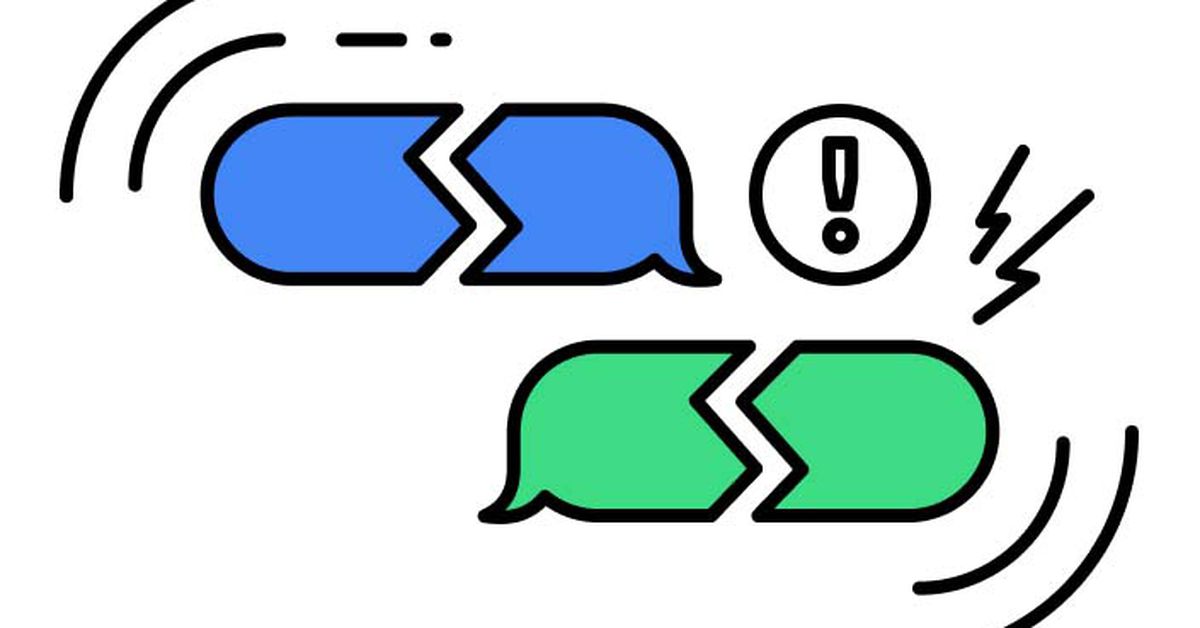- cross-posted to:
- android@lemmy.world
- cross-posted to:
- android@lemmy.world
Samsung has released a new video in support of Google’s #GetTheMessage campaign which calls for Apple to adopt RCS or “Rich Communication Services,” the cross-platform protocol pitched as a successor to SMS that adopts many of the features found in modern messaging apps… like Apple’s own iMessage.



Internal memos explicitly stated execs were worried that if they brought iMessage to android, poor families might buy their kids cheap android phones instead of iPhones.
You can’t make this stuff up
https://www.theverge.com/2021/4/27/22406303/imessage-android-eddy-cue-emails-apple-epic-deposition
Ok I’ll ask, how is iMessage fundamentally any different from texting (other than this RCS stuff)? You can still text. Or is it that weird color thing or checkmark that kids are social pressured into?
Iphone users keep sending me long horribly compressed videos i can’t see at all because it’s not a problem between iPhones. And something about group chats?
That’s all I know of based on my experience.
And Android users send me postage-stamp sized videos I can’t see at all. Not gunning, just saying it’s a problem in both directions (and apple’s fault). Also, Android doesn’t have the same easter eggs, like automatic confetti filling my screen when someone writes the word “congratulations!” in iMessage. Oh, right - iMessage gives me in-line replies and the ability to give a thumbs up/down/heart etc. response to a single message. Don’t know if android has this feature, but android users just get a blank text if I “thumbs up” a comment, for example.
It’s a lot of things, and Apple kinda backed into the lock-in aspect I think by mistake. At the time it debuted, you mainly used SMS when mobile texting, and SMS is garbage. It’s not encrypted, was limited to a small number of characters, etc. Picture/video messaging also isn’t part of the standard, so MMS was tacked on with massive limits, because the thing about SMS is that it wasn’t really designed with it’s own bandwidth in mind and instead piggybacked on the carrier signal in idle time (I’m real fuzzy on the details because it’s been so long, if someone knows exactly that would be helpful context.) Most importantly, in the US at least, SMS was a fee carriers absolutely scalped you for. When iMessage came out, carriers were still charging absolutely stupid prices for a package of like 200 texts and per text after, and receiving also counted towards that.
Apple says “hey we have the internet on this thing, let’s make it a feature that when you send to other iPhone users it doesn’t count against your text package” and then built a “modern” text platform. E2E, rich image/video support, the stuff you mention, etc. They made it so that you didn’t have to worry about whether your friend was on iPhone, you could send a message to their number and Apple would figure it out. The green bubble thing initially was just “btw you’re paying for this one.” The reason I say they kinda backed into the lock-in thing is because obviously the idea here was “buy an iPhone and stop paying stupid carrier fees” which is obviously a lock-in strategy, but that aspect of the carrier plans basically collapsed as Facebook released Messenger that same year, so it quickly became “unlimited for $20” and then just “it’s all in your plan (which we’re just being less obvious bout gouging you on.)”
The green bubble thing sticks around though in the US largely because the US is one of the few places where iMessage becomes a major player in the messaging space, probably because the US market sees a larger share of iPhone sales due to economics and Apple not really having a low-end strategy except “buy an older iPhone.” Other places go to WhatsApp or WeChat or whatever, but Apple continues to grow (I think around 55% in the US?) and now it’s an annoyance for everyone. I don’t think I’ve ever really seen anyone care about the green bubble other than “shit now I have to figure out how to send them this video of the whatever.” At least for younger generations, this just means that the primary text method becomes Snap (me and my wife are about the only people my kids open the Messages app instead of Snap for) while the olds all use Facebook Messenger, and those who refuse just spend more of their day annoyed.
Anyway, it was a nice convenience when it launched. Personally, I think Apple has little reason to develop and process messaging for free for Android and businesses don’t do things to be nice, but they’re all about service revenue, so I think they should release an Android app, and make it easy to buy stickers and shit like that, send money via Apple Pay, etc. iMessage has already subtly shifted that direction on iPhone and I know at least in my friend/family group we pass money around like that all the time, and this becomes another thing that’s sort of annoying when we hang out with someone who isn’t on iOS. also, probably obviously, but it’s not even like “oh we’re hanging out with the poor friend on Android” or anything, he is also holding a $900-$1200 phone, so the lack of interop on these types of things that should probably just be a protocol is annoying af.
Wikipedia sais WhatsApp was released 2009, two years before iMessage. So the idea wasn’t new and they most likely didn’t lock out Android users by accident.
Of course the idea wasn’t new. That’s very nearly Apple’s business model - they’re rarely first to market with a technology. I’m sure if I go look, AIM was probably in there pretty close the App Store launch. But Apple’s implementation was quite new. Everyone in the US at least was texting with the phone number as the identifier. Apple made it so that no one had to change any habits, use the same method for texting you have been literally in the same app you always have, and if you text another iPhone it just works better. They didn’t make it worse on Android.
I’m not sure how this is “lockout.” I already made the argument it’s a lock-in tactic, but like when Tesla came out with the supercharger network, should I be mad that it doesn’t gas up my Honda? Why would we expect that Apple is going to develop and maintain an app for Android for free and the massive amount of infrastructure that goes with it any more than I would expect Tesla to have added a gas pump to the supercharger network? And similar, it’s not like superchargers existing means all of the gas stations are gone.
It’s also worth noting that RCS functionally didn’t exist during development of iMessage (I think they were forming a committee to decide which committee will implement committee structure votes or something) and that even now RCS implementation is questionable at best between not having E2E as a requirement and the fragmentation that exists even across Android and most especially carriers (lots of examples of RCS being iffy in this thread alone) so it wasn’t like Apple looked at a fully-formed SMS/MMS replacement and chose to do their own thing.
Then you tack on 10 years of Google absolutely fumbling the bag with their messaging strategy (everyone reading is thinking of a different one - you’re all correct) and now we end up in the situation we’re in where not only did iMessage lock-in work for Apple, it worked better than they hoped and it’s not just keeping people on iPhone, it’s actively attracting people.
My optimistic take on this is that I hope they decide the lock-in isn’t worth it in favor of the type of model where they monetize through Apple Pay and stuff and build an Android app because I sincerely doubt there is any other way toward unified messaging, in much the same as Tesla now licensing superchargers to other EV makers. As it stands, Apple could give a shit about Samsung’s ads, and aside from the lock-in, a core of their brand is privacy/security so RCS as-is will be a non-starter. Well covered in this thread, but the EU isn’t coming to save us and the US has congress that can’t even regulate it’s own bowel movements, so
The Tesla comparison would work better this way: while you’re driving to another Tesla owner’s place, you’re having a smooth ride, no bumps, car works as expected. Then you put your other friends address into into the navigation and the radio switches to noisy FM and one of the headlights starts to flicker. It’s lock-out because no non-iphone user can join that club. It’s not lock-in, because every iphone user could easily switch to one of the “cross-platform” messangers. Not that I like Google. They’re both sh*t. But just opening up your infrastructure for others doesn’t mean you have to develop and maintain apps for other OSes.
SMS works the same as it ever has. Apple hasn’t broken anything, they’re not polluting SMS, it’s always been shit. The Tesla (probably touching a little more on real life) shipped with shitty QA that gave you a crap light and bad stereo. If you take Apple completely out of the equation and just process standard SMS between two Android phones, it’s still going to be garbage. If you add an iPhone, nothing changes. When you add iMessage into the mix, it’s still not breaking anything, only adding a shim on top of SMS, which admittedly sucks, but I think users would rather see “float liked your message” rather than no acknowledgement. This is also what’s happening on Android (and also iOS) a lot of the time.
“Just” is doing a frick-ton of work in that sentence. At a minimum, they would have had to build and maintain data centers, or at the very least add a lot of capacity to existing centers to support potentially quite likely a few hundred million to a billion Android users. Now you have to design and document APIs for other people’s use. This alone is why I said just build the app themselves, believe it or not it’s probably easier/less headache in the long term. And then there is supporting the API, the users on non-Apple platforms…
And why do they want to do that? We’re talking about many millions in expenditure per year for Apple for which they get nothing except less competitive advantage.